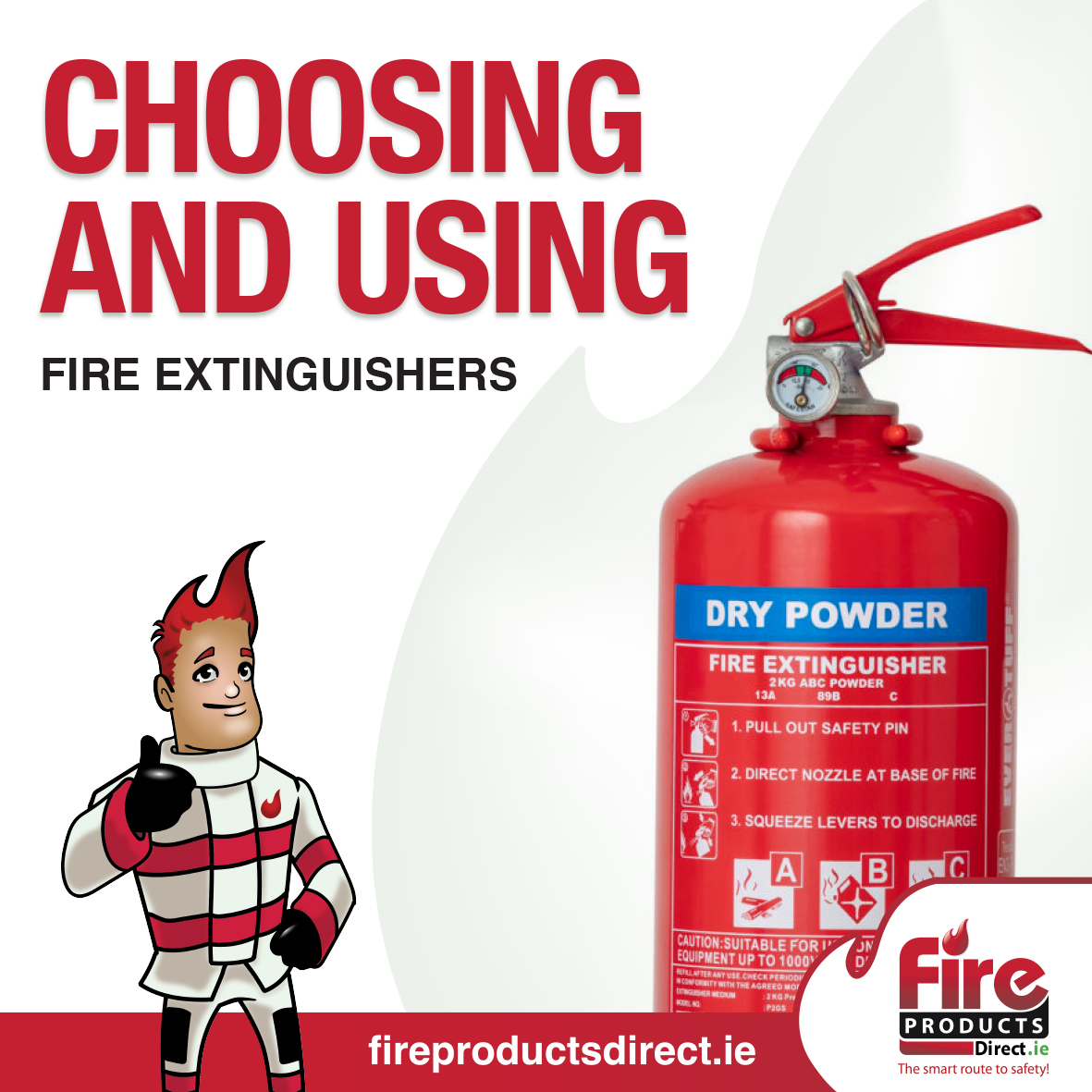
Fire extinguishers are essential tools for fire safety, providing a first line of defence in the event of a fire. Selecting the right extinguisher and knowing how to use it correctly can make all the difference in protecting your home or business. Here’s your guide to choosing and using fire extinguishers effectively.
CHOOSING the Right Fire Extinguisher
Understanding Fire Classes:
Class A: For ordinary combustibles like wood, paper, and cloth.
Class B: For flammable liquids such as gasoline, oil, and grease.
Class C: For electrical fires involving wiring, appliances, and circuit breakers.
Class D: For combustible metals like magnesium and sodium (typically industrial settings).
Class F: For kitchen fires involving cooking oils and fats.
Types of Fire Extinguishers:
Water Extinguishers: Suitable for Class A fires. Not for use on electrical or flammable liquid fires.
**Foam Extinguishers: Effective on Class A and B fires. Not suitable for electrical fires.
** RESTRICTED. Read more here
Dry Powder Extinguishers: Versatile for Class A, B, and C fires. Can be messy and may not cool the fire completely.
Carbon Dioxide (CO2) Extinguishers: Ideal for Class B and electrical fires. Leaves no residue but has limited range.
Wet Chemical Extinguishers: Specifically designed for Class F fires in commercial kitchens.
Home:
An ABC extinguisher is typically suitable for home use as they are safe for use on all types of fires. You may need to consider additional extinguishers for the kitchen and garage or other specific risks such as a home office etc.
Business:
Larger, multiple extinguishers will be needed, depending on the size, layout and risk profile of the business. Why not contact us today for a no obligation quotation.
Certification:
To ensure reliability and effectiveness, always choose extinguishers that are manufactured to EN3 and carry the CE marking.
In order to issue a certificate in accordance with Irish Standard 291 (Portable Fire Extinguishers) for commercial use, you would require a site visit as such certificates deem that “a review of the premises and extinguisher inventory has been undertaken and the signatory is satisfied with the level of cover present and that it has been installed correctly and with the applicable risks addressed”
Fire products direct has a nationwide network of qualified engineers. If you require assistance with on – site installation, certification or maintenance, please contact our support team who will be happy to advise.
USING Fire Extinguishers Correctly
The PASS Method:
Pull the pin: This unlocks the operating lever and allows you to discharge the extinguisher.
Aim low: Point the nozzle or hose at the base of the fire.
Squeeze the lever: This releases the extinguishing agent.
Sweep from side to side: Move the nozzle or hose side to side at the base of the fire until it is extinguished. Keep aiming at the base of the fire, not the flames.
Safety Tips:
Distance: Stand about 1.5 to 2 meters (5 to 6 feet) away from the fire when using the extinguisher. Always test the extinguisher before approaching the fire. Back Away, always watching for rekindle.
Evacuation Plan: Always have an escape route. If the fire becomes uncontrollable, evacuate immediately and call emergency services.
Regular Maintenance: Inspect extinguishers monthly to ensure they are in good working order. Check the pressure gauge, hose, and nozzle for any signs of damage or blockage. Extinguishers in any commercial setting must be inspected at least annually by a competent person.
Training: Ensure all household members or employees know how to use fire extinguishers. Conduct regular training sessions and fire drills.
After Use:
Refill or Replace: After using an extinguisher, even if only partially, it needs to be refilled or replaced. Contact a professional service for maintenance.
Clean Up: Be aware that some extinguishing agents can leave residue. Clean up promptly to avoid any damage or safety hazards.
Choosing the right fire extinguisher and knowing how to use it correctly are critical steps in ensuring fire safety for your home or business. By understanding the different types of extinguishers, their appropriate uses, and the correct operation, you can be better prepared to tackle small fires before they escalate.
To purchase the right fire extinguisher for your needs, visit our store
Be Smart. Be Prepared. Be Safe.
Remember: If You Discover a Fire
- Raise the alarm (In a commercial setting, you can sound the alarm by activating the nearest break glass unit)
- Evacuate the premises
- Call 999 or 112
- Only tackle the fire if safe to do so







